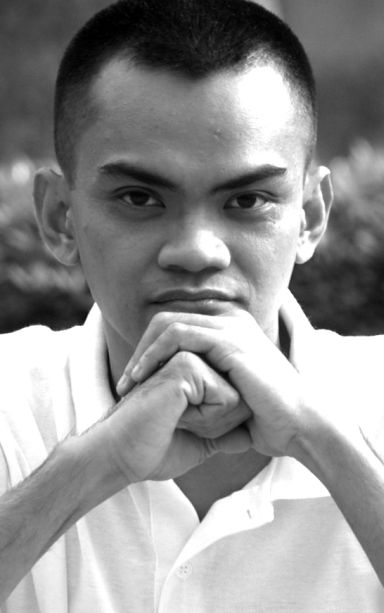
PAREDES
President Rodrigo Duterte recently raised the question why we do not have a Lapu-Lapu Day.
While other heroes are honored with national holidays, he asks why Lapu-Lapu, the first hero in the Philippines and, more importantly, a Bisaya, is not given his own day?
It is an interesting question, particularly for Cebuanos who gave the President massive votes during the elections.
Duterte is again trying to stoke the fire of regional pride in this issue of national heroes, most of whom come from Manila and Luzon. Such sentiment becomes even stronger as he drums up the campaign for federalism, one of his major campaign promises.
A good narrative on Lapu-Lapu will also be important, as the Philippines joins the global commemoration of the Magellan Quincentennial or the 500th anniversary of the Magellan Expedition in 2019.
Lapu-Lapu is Duterte’s pet advocacy, and it was in the middle of his postcolonial rantings against the United States and Europe that he suggested that we make Lapu-Lapu our National Hero, replacing Jose Rizal, who was for him a mere reformist who did not really believe in the struggle for independence.
But much as we would have wanted a good retelling of Lapu-Lapu, there is not really much information about him to begin with.
Almost everything that we know comes from the accounts of Antonio Pigafetta, who wrote just a few lines about him in his description of the battle of Mactan in 1521.
The Italian chronicler did not even specifically stated that it was Cilapulapu, as Pigafetta referred to the leader of Mactan, who killed Magellan during that battle. What he merely wrote was that a lot of native warriors attacked him with spears, arrows and swords.
He did say, however, that one of them hacked Magellan’s leg with a big cutlass (probably a kampilan, which is a long native sword) but Pigafetta did not specifically identify him as Lapu-Lapu.
Having a keen eye for detail, the Italian writer could have easily spotted a leader from the group. There should be a way for him to stand out, from the way he dresses and conducts himself in battle or how his men would treat him. But Pigafetta made no such distinctions.
So what we know about Lapu-Lapu is limited from the few lines Pigafetta wrote about him in his journal.
Pigafetta had been accurate in most of his descriptions of that voyage, so he remains a reliable source of information about the Battle of Mactan, being an eyewitness and one of those who was wounded.
In fact, he was the only primary source, unfortunately.
Past historians had tried to augment Pigafetta’s accounts with their own speculations, desperate for a narrative of early anti-colonial heroism, particularly during the early years of nation-building.
Artists and literary writers also made their own versions of the story of Lapu-Lapu and the Battle of Mactan based purely on imagination.
Eventually they make the iconography upon which the myth of Lapu-Lapu was made and it served well the need of a fledgling nation that had just liberated itself from centuries of colonial rule.
And, as we look forward to decentralize the nation, the President needs the Lapu-Lapu story to be retold once again. This time, perhaps to support his own version of Philippine history or his own myth.
Speaking of liberation, there is yet another historical narrative that Cebuanos themselves have almost forgotten:
Cebu’s independence from Spanish rule, which was celebrated in December 29, 1898. And to mark that occasion, Palm Grass Hotel, which brands itself as the Cebu heritage hotel, celebrated the whole month of December as “Pasko sa Kagawasan” (Christmas of Liberation) recalling that December 119 years ago, when the Cebuanos had a triple whammy:
In between Christmas Day and the New Year’s, they celebrated Independence of Cebu after a Mass at the Cebu Cathedral. Last Friday, December 29, Palm Grass relived that moment with a Mass officiated by a priest from the Cebu Cathedral and with some of the descendants of Cebu Katipuneros in attendance.
Me and my family were invited, having come from the same clan of the Surigaonon Florencio Gonzalez, who was among the first martyrs of the Cebu Revolution in 1898.
The hotel was decorated with golden bell lanterns with red ribbons marked “1898-2017” and “Pasko sa Kagawasan,” the flags of the KKK and the Philippine Republic, whose tricolors were also reflected in the curtains that wrapped the grand stairway and the buntings that hang from all over the lobby.
A grand dinner buffet of Cebuano fiesta food was served, and a mix of Christmas music, patriotic songs and poetry were added to the festive ambience.
A “Bangga sa Binisayang Awit” (Cebuano song contest) was held at the hotel’s lobby cafe followed by a traditional rural bayle held at the roofdeck bar on the seventh floor.
It was a unique Christmas celebration that was intended to remind us of another forgotten event in Cebu’s history.
And in the light of the President’s query on Lapu-Lapu, we might as well ask ourselves the other question:
Why are we not celebrating Cebu Independence in the same season with Christmas and New Year’s Day?
Disclaimer: The comments uploaded on this site do not necessarily represent or reflect the views of management and owner of Cebudailynews. We reserve the right to exclude comments that we deem to be inconsistent with our editorial standards.
